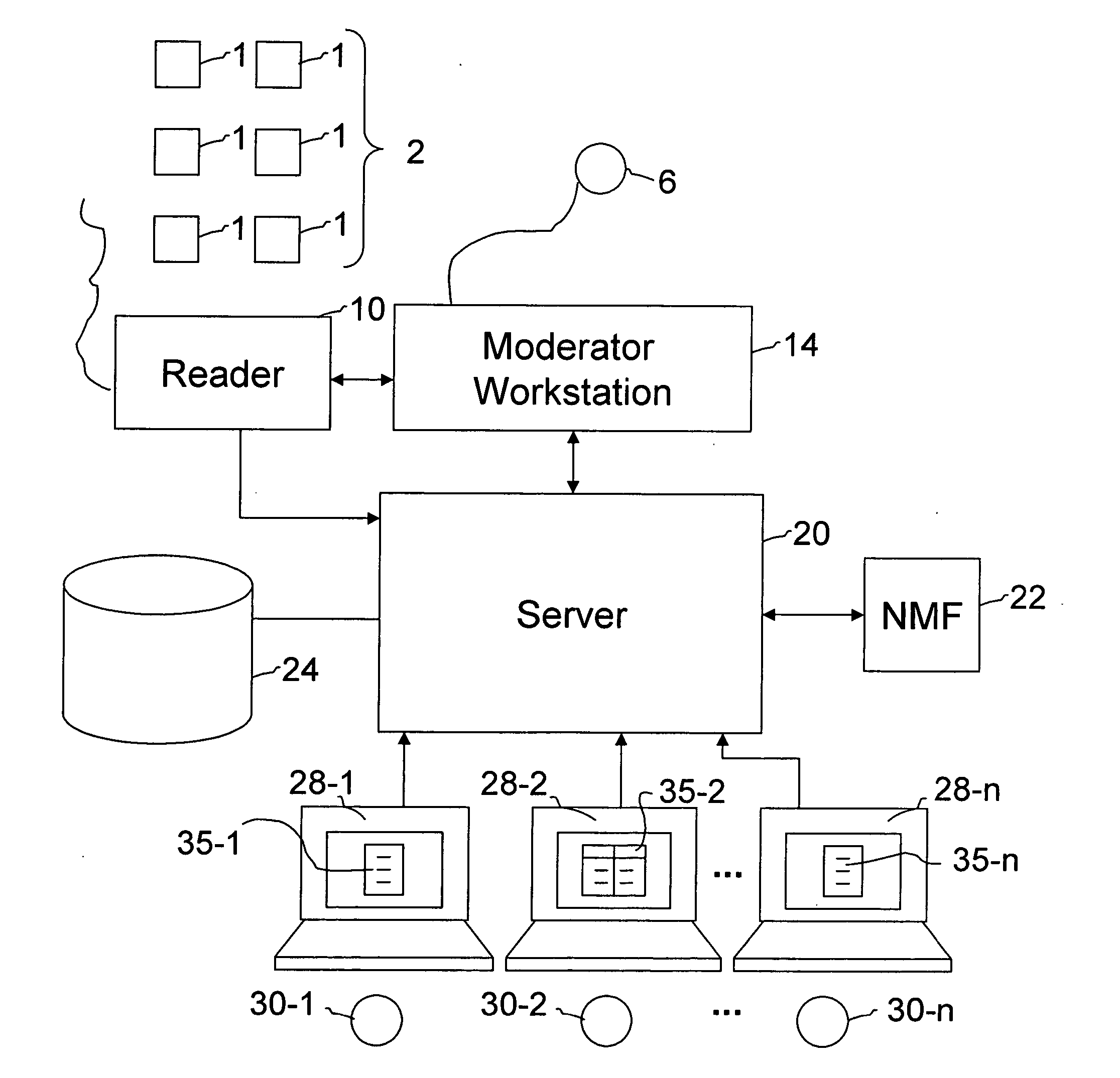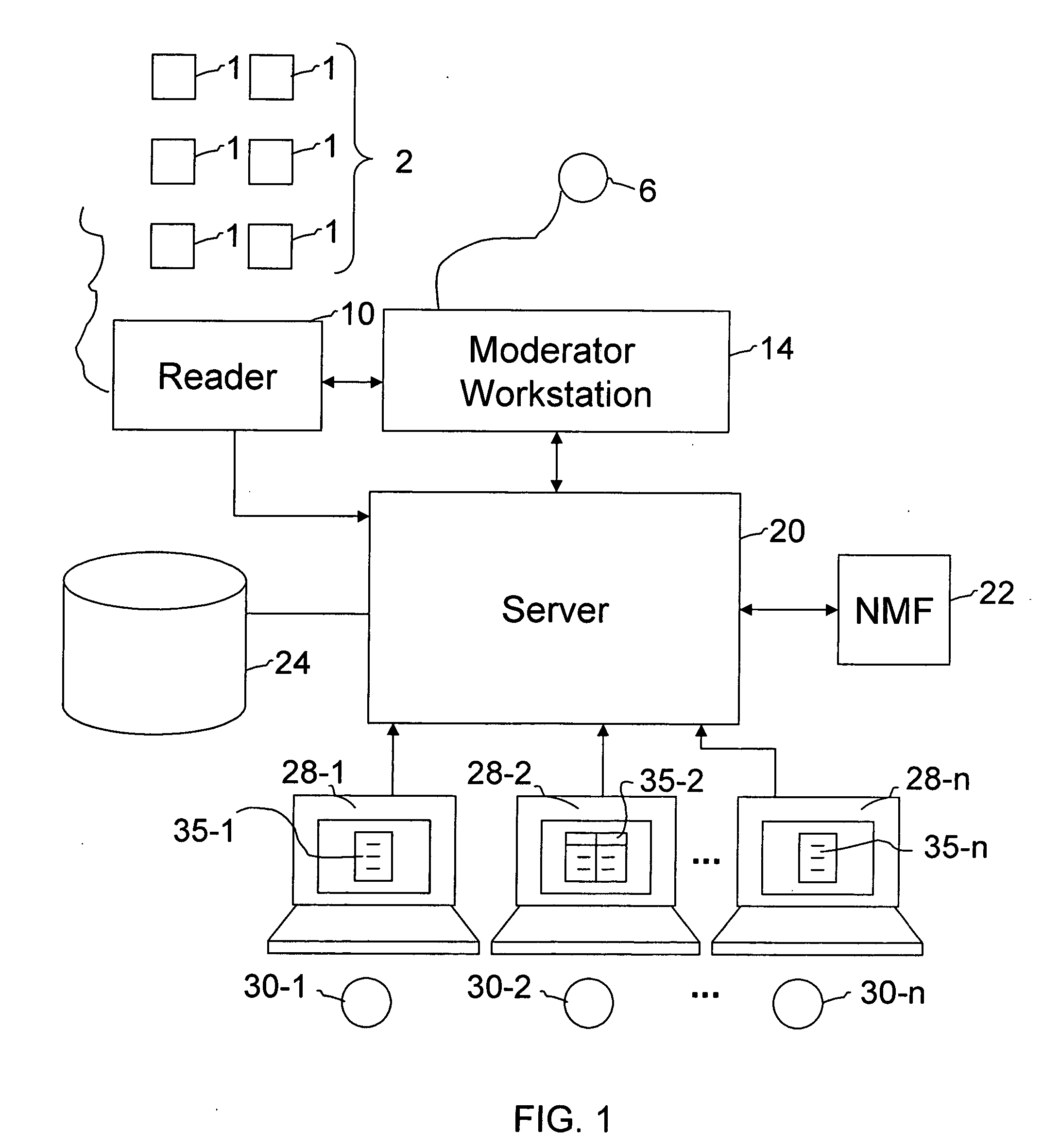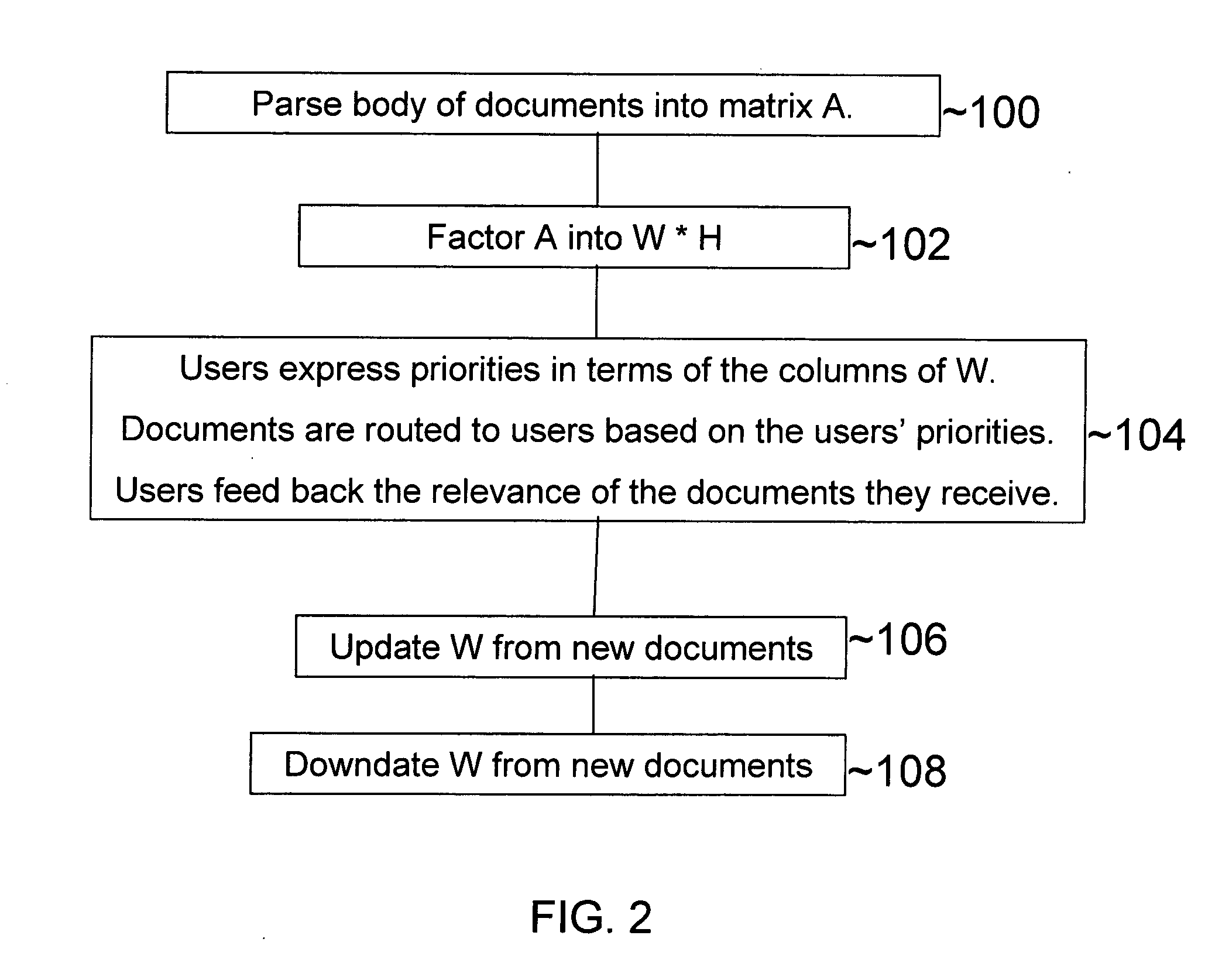Query construction for semantic topic indexes derived by non-negative matrix factorization
a semantic topic index and non-negative technology, applied in the field of query construction for semantic topic indexes derived by non-negative matrix factorization, can solve the problems of lack of rigor, unlikely that a thesaurus can provide all possible synonym terms, and difficulty in identifying the meaning of the topic,
- Summary
- Abstract
- Description
- Claims
- Application Information
AI Technical Summary
Benefits of technology
Problems solved by technology
Method used
Image
Examples
Embodiment Construction
[0016] Utilizing embodiments of the present invention, an intelligence agency or other organization, for example, can quickly reduce its backlog of unprocessed documents (i.e. intelligence-bearing items in any discernible form whether in tangible or electronic or other form) and maintain zero backlog by routing freshly accessed documents to appropriate users. Alternatively, an existing database of documents could be analyzed. The procedure utilizes the techniques of semantic indexing, query matching, and factor updating. Semantic indexing reduces a body of thousands of documents to a few hundred groups of resolved terms. In most contemplated applications, the resolved terms will be words. The use of the term “words” below does not exclude the analysis of other types of resolved terms. A user can select resolved terms to create semantic topics. A semantic topic relates a resolved term to a particular topic without requiring an exact word match in the document to a topic of interest. ...
PUM
 Login to View More
Login to View More Abstract
Description
Claims
Application Information
 Login to View More
Login to View More - R&D
- Intellectual Property
- Life Sciences
- Materials
- Tech Scout
- Unparalleled Data Quality
- Higher Quality Content
- 60% Fewer Hallucinations
Browse by: Latest US Patents, China's latest patents, Technical Efficacy Thesaurus, Application Domain, Technology Topic, Popular Technical Reports.
© 2025 PatSnap. All rights reserved.Legal|Privacy policy|Modern Slavery Act Transparency Statement|Sitemap|About US| Contact US: help@patsnap.com



